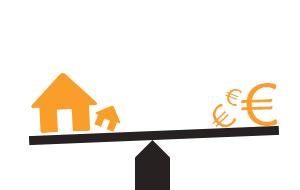|
|
Expert Advice
|
|
For Success in Ecommerce
|
|
Samir Iklef, ecommerce expert and head of our international technical support department, offers you his advice for using online marketplaces.
|  |
|
|
The Marketplace Boom: How to Use it to Increase Your Visibility?
|
Online marketplaces allow retailers to sell their goods on an external site. These channels have become a good source of additional income thanks to the success they’ve enjoyed.
Using marketplaces to sell your goods is thus a very quick and effective way to increase your turnover and multiply your sources of acquisition.
What’s more, the success of marketplaces is clear: Amazon UK, Argos and Tesco were at the top of the most visited UK mobile retail sites in 2013.(1) Being present on one (or several!) of these marketplaces will help you increase your online presence and visibility significantly. A site like eBay has a global customer base of 233 million, which means, worldwide, 233 million potential buyers for your products!
But how do you export your catalogue? And how should you adjust your prices and interact with your customers? What are the common mistakes to avoid when using marketplaces?
|
|  |
| |
|
|
Optimise Your Marketplace Presence in 4 Steps
|
|
|
01
|
Export your catalogue
|  |
Before venturing into the world of marketplaces, you should first determine if you wish to export your entire catalogue or only part of it. There is no universal rule for making this decision. You should adapt in the most favourable way to the context and potential sales for your business and export the products that are most likely to sell well on this type of platform.
To give you a better idea of what we mean, below you’ll find some practical advice to help you maximize your chances of success with online marketplaces:
|
- Save the products that you wish to keep exclusively for your customers for your own website. This is a good strategy because it allows you to maintain your reputation with your customers, while encouraging other internet users to look at your site for exclusive offers.
- Put your most common or hard to sell products on marketplaces. Marketplaces generally generate a large volume of traffic, which will help you sell these items quickly and increase your turnover significantly, while helping you unload certain products.
- Only put products with a low return rate on marketplaces. Marketplaces are very strict with the quality of products offered and the services their sellers provide. Putting “risky” products on a marketplace could lead to an eventual ban from the platform. As a general rule, the rate of return of your products shouldn’t exceed 2% if you want to put them on a marketplace.
|
|
Tip
|
|
With Actinic MarketPlace Manager, selling on eBay or Amazon is simple. You can list products, track orders and manage inventory right from the Actinic back office. Managing all of your sales channels from a central location will save precious time when promoting and running your business.
|
|
|
|
02
|
Adapt Your Pricing Strategy
|  |
|
Your pricing strategy must be flexible and adapted to this sales channel. The products that you put on a marketplace should be carefully selected: choose ones that are likely to have a large profit margin. Think about your profitability, especially as price competition is much more front and centre in a marketplace. Your products are sold next to your competitors’, and you know customers are going to compare!
|
- Save your big discounts for your own website. Marketplaces already take a 10% cut on each of your transactions, so it’s difficult to lower prices. Think about your prices before posting items so you won’t be taken by surprise later and have to make last minute profit calculations.
- Keep an eye on your competitors’ prices. Marketplaces tend to feature search results depending on prices. If yours are too high compared to others, your competitors will show up before you in the search results (which are organized by price from lowest to highest). This is why it’s important to choose the products you post carefully! Opt for products with a large profit margin so you can offer very competitive prices.
- Put marketplace suggestions in perspective. Often, they will advise you to lower your prices so that they’ll be even more competitive. However, don’t forget that you need to make a profit to make it worthwhile. Try to offset your price by emphasizing the quality of your customer service…and don’t give in to the temptation of helping the marketplace look better than its competitors!
|
|
Tip
|
|
Amazon allows you to create a price watch for your competitors. With the aid of this tool you can adapt your prices to the market, and gain a competitive edge that will help improve your chances of success on the marketplace.
|
|
|
|
03
|
Manage Your Stock and Orders
|  |
|
Once you’ve exported your catalogue onto the marketplace with competitive prices, the marketplace could decide to feature your products on their website. This could lead to a spike in orders, so be ready to manage this peak and don’t get left high and dry!
|
- Make sure you have sufficient stock. In order to achieve this, manage your stock rigorously by updating it several times a day, anticipating possible ruptures and resupplying. If in doubt, insert a limited number of stock for all of the products you post on marketplaces.
- Be ready in numbers to face a flood of orders. You’ll have to guarantee the same level of service as you normally do with your own website. Be ready with backup if you notice a distinct increase in your sales.
- Be ready to process orders. In order to ensure a good reputation with marketplaces, process orders coming from them as a first priority. This will help you avoid delivery delays. It’s important to respect estimated delivery times so as not to receive negative ratings from customers that could lead to your eventual exclusion from the channel.
|
|
Tip
|
|
The Actinic platform allows you to centralize the management of your stock, regrouping everything on the same back office (marketplaces, sales management, online store…) However, if your ecommerce doesn’t enable you to do so automatically, don’t forget to synchronize your marketplace stock with your ecommerce website stock. This will avoid problems like, for example, selling the last in stock of a product more than once.
|
|
|
04
|
Take Care of Your Customers
|  |
|
As we’ve seen, marketplaces are very demanding in terms of quality of customer service, so yours has to be exemplary. After each sale, marketplaces send the buyer an email asking him or her for feedback on the purchase and inviting them to rate the vendor (you). These ratings are very important to help improve your sales via these channels each month.
|
- Pay attention to your customers’ questions and be particularly responsive. Be aware that over 5 negative assessments in a row could lead the marketplace admin to penalize you and you could lose several weeks of sales. Sometimes it’s better to reimburse an unsatisfied customer right away than to have an increase in negative assessments.
- Make sure that clients are satisfied with their purchases and that they remember the name of your website. This way, you’ll receive positive comments and improve your reputation as well as your longevity and success on marketplaces. It is possible to create a loyal customer base through marketplaces as well as through your own ecommerce site.
|
|
Tip
|
|
Put a next purchase discount voucher on your own website. This will help customer retention and satisfaction while generating traffic to your site.
|
|
| |
|
Source : (1)internetretailing.net 2013
| |
|
|
Follow our expert advice before getting started !
|
|